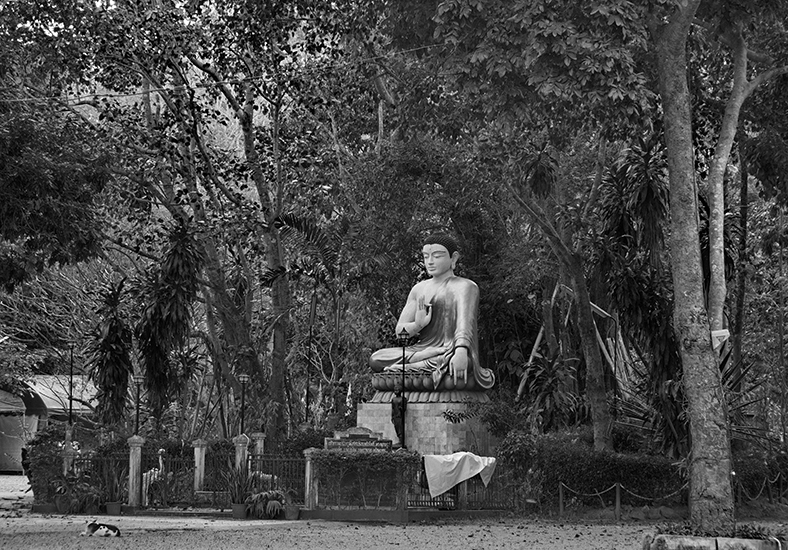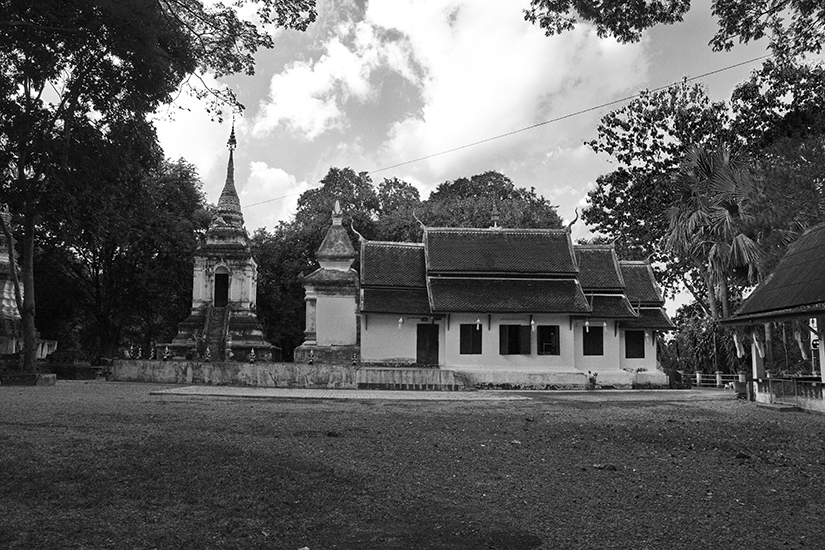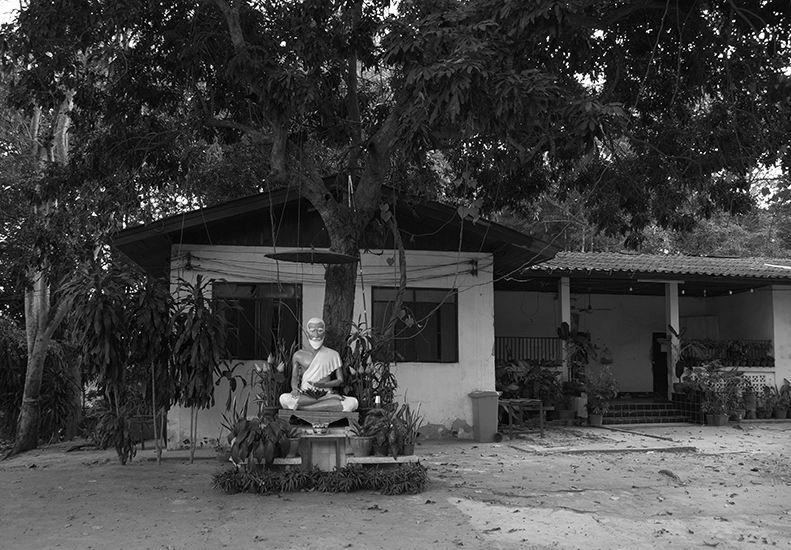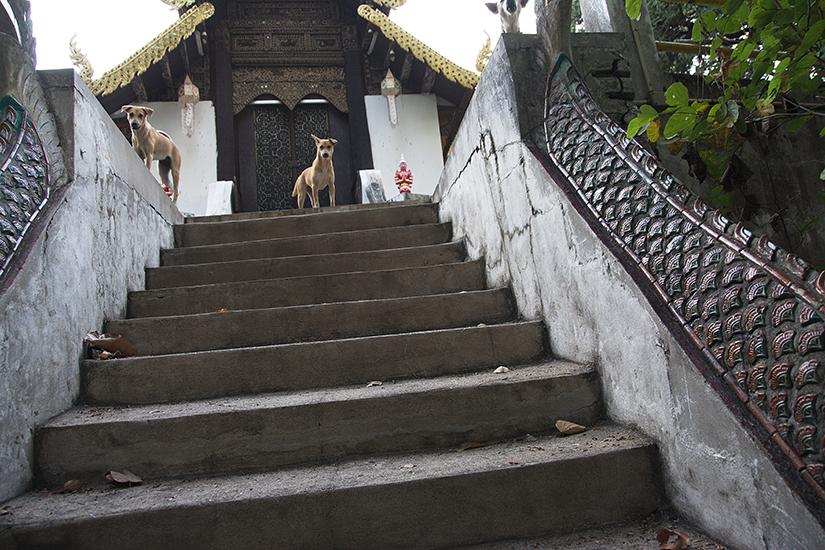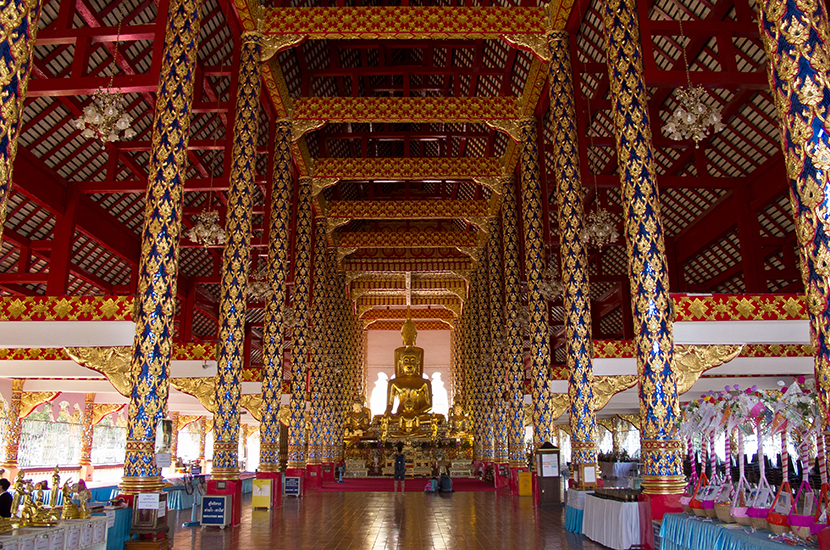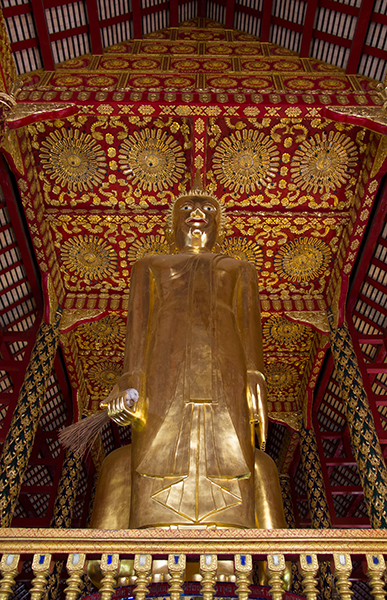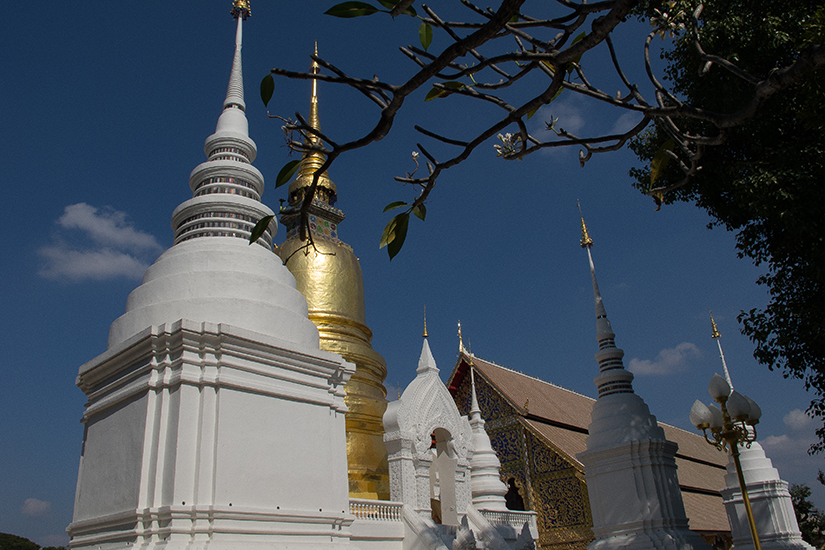| The forest hermit
(excerpted from "This
Hindu holy man is a Thai Buddhist," by Justin McDaniel.): "Just
like Siva, Brahma, Indra (Sakka), Laks. , the Buddha, Avalokitesvara, Narayana
(Visnu), Maitreya/Metteya, Ganesa, Rama and other Indic powerful beings,
the figure of the Indic-looking hermit or ascetic has long been present
in the statuary of what is known today as Thailand. Indeed, these enlightened
beings and deities, like Siva and the Buddha (before he realized awakening),
are often depicted as ascetics or hermits living in the forest, dressed
in animal skins, engaged in meditation. The ascetic path and the time of
training in the wilderness is one of the dominant narrative sequences in
Asian religious biographies and stories from India to Burma to Japan since
at least 1500 BCE. . . In South East Asia, images of these hermits are sometimes
identified by art historians as the famous r.s.i Agastya, a sage often connected,
but not exclusive to Saivism. However, most art historical studies which
mention r.s.i do so only in reference to photographs of r.s.i statues in
Cambodia, Thailand or Java. They do not speculate on their personal name
and they are known, because of lack of evidence, as simply hermits/seers/r.s.i.
... In South East Asia, Agastya, like many hermit figures, usually has a
pot belly, beard and moustache. More specifically, he is often identified
as different from other sages because he carries a water jar and a large
set of chanting beads. Fly whisks and tridents also occasionally accompany
these statues." |
